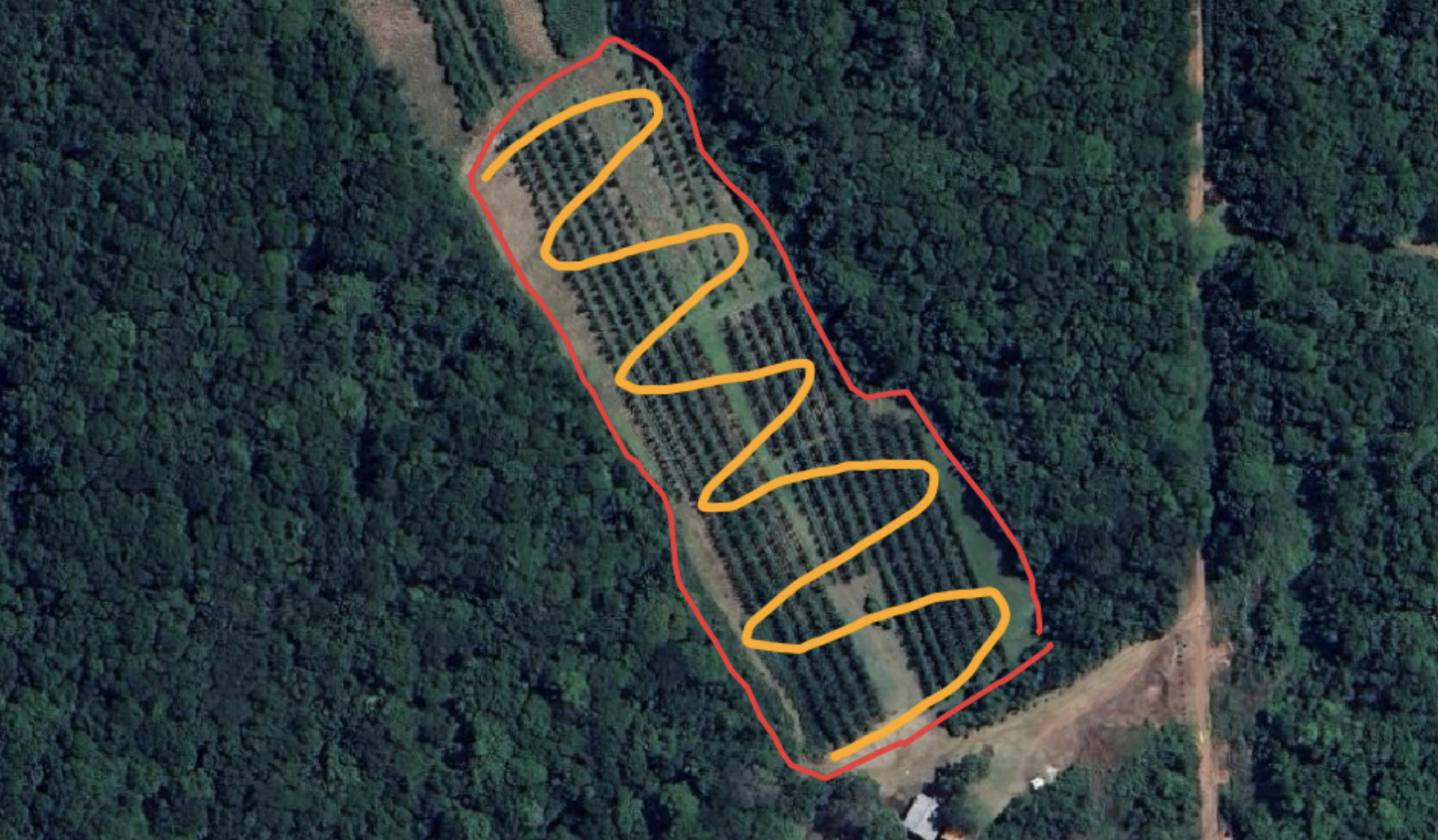Soil collection methods
link to soil collection protocols
We developed an edge-to-edge sampling strategy designed to capture heterogeneity within a treatment site to facilitate accurate cross-treatment comparisons. Here a ‘site’ refers to a spatially explicit, discrete sampling unit. The sampling strategy requires the field technician to walk the entire site, periodically stopping to collect a small quantity of soil (Figure 1). These small quantities of soil are pooled into one large volume sample. After all the samples are collected, the pooled site sample is thoroughly homogenized and multiple smaller volume replicates are extracted and preserved for transport to the lab for eDNA extraction (Figure 2).
 Figure 1. An example path taken by a field technician to collect soil from the entire site including all micro-habitats within the site.
Figure 1. An example path taken by a field technician to collect soil from the entire site including all micro-habitats within the site.
 Figure 2. The soil collection workflow for our edge-to-edge sampling strategy.
Figure 2. The soil collection workflow for our edge-to-edge sampling strategy.
The goal of the approach is to collect soil from all micro-habitats within the site. These could include different micro-aspects, under different plants or types of plants, and sun vs. partial shade. This approach works to survey either units of analysis (e.g. multiple forests) or units of observation (e.g. multiple sites in a larger forest). To ensure consistent sampling effort, this approach is best suited to roughly equal-area sites that can be fully traversed within a set period of time (Willott, 2001). Large sites can be accommodated if the transit time within the site is not negatively affected by e.g. dense vegetation or steep slopes or by using multiple units of observation.
Convenience sampling or random stratified sample based on intervention age.